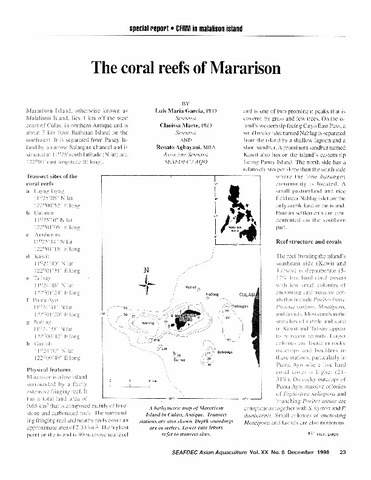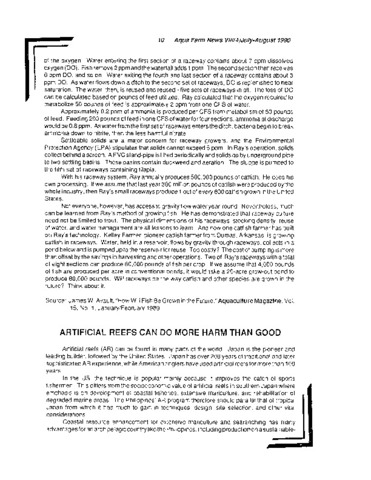Total volume of 3D small patch reefs reflected in aerial photographs can predict total species richness of coral reef damselfish assemblages on a shallow back reef
- Global styles
- MLA
- Vancouver
- Elsevier - Harvard
- APA
- Help
Share
Abstract
Because fish have a high dispersal ability, an understanding coral reef fish metacommunity structure is vital for effective conservation. Coral reefs provide patchy habitat of various sizes and scales. We examined the species–area relationship (SAR) of damselfish (Pomacentridae) assemblages over 81 environmentally homogenous patch reefs ranging 0.07–45.4 m2 with low coral cover. Patch reefs were located in the shallow back reef (<2.5 m deep) off Ishigaki Island, Japan. Reef area was measured by performing image analysis of enlarged sections of a high-resolution (>1/2500) color aerial photograph used as a fine-scale seascape map. To assess the effects of three-dimensional meso-scale rugosity on species richness, we assumed that all reefs had a cylindrical shape and examined species by volume (area × height) relationships (SVR). Patch reef volume was a better determinant of species richness than area, and the regression functions of SVR provided better estimates of patch reef species richness. Neither the observed SVRs nor SARs, however, could be explained by a random placement model alone. Our results suggest that several small reefs are likely to have higher species richness than a single large reef of equivalent area in the shallow back reef where large patch reefs are flat. Thus, total patch reef volume (area × height) better reflects meso-scale rugosity and is a useful indicator of total species richness relative to the total amount of essential habitat in shallow back reefs.
Suggested Citation
Hattori, A., & Shibuno, T. (2015). Total volume of 3D small patch reefs reflected in aerial photographs can predict total species richness of coral reef damselfish assemblages on a shallow back reef. Ecological Research , 30(4), 675-682. https://doi.org/10.1007/s11284-015-1268-0
Type
ArticleISSN
0912-3814; 1440-1703Koleksi
- Journal Articles [1256]
Except where otherwise noted, this item's license is described as http://creativecommons.org/licenses/by/4.0/
Related items
Showing items related by title, author, creator and subject.
-
Changes in the fish diversity and abundance on a heavily fished fringing reef on Santiago Island, Pangasinan, Philippines
McManus, John W.; Nañola Jr., Cleto L.; Reyes Jr., Rodolfo B.; Kesner, Kathleen N. (Bureau of Agricultural Research, Department of Agriculture, 2007)Fish assemblages on the reef slope, reef flat, and seagrass beds on Santiago Island were sampled over 18 months in 1992-1993 as part of a 6-year reef monitoring project started in 1986. Abundance and species diversity were ... -
Artificial reefs can do more harm than good
Carreon-Lagoc, Julia; Southeast Asian Fisheries Development Center, Aquaculture Department (Aquaculture Department, Southeast Asian Fisheries Development Center, 1990)







